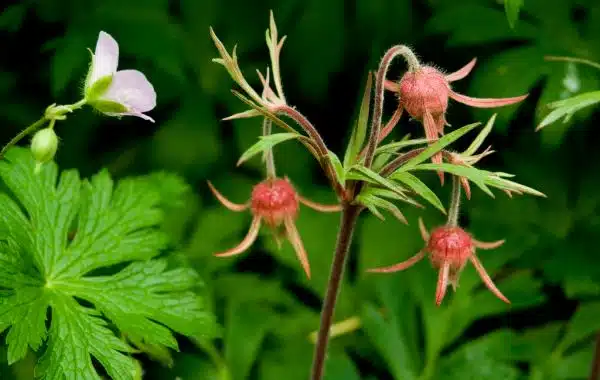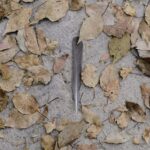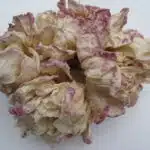Wild geraniums, also known as cranesbills, are a popular choice for gardeners looking to add some color and texture to their landscape. These hardy plants are easy to grow and care for, making them an excellent option for both novice and experienced gardeners alike. In this article, we will explore the various aspects of growing and caring for wild geraniums, including planting tips, soil requirements, watering needs, and pest control measures.
Growing wild geraniums is a rewarding experience that requires patience and attention to detail. These resilient plants can thrive in a range of different environments, from sunny open spaces to shady corners of your garden. With proper care and maintenance, wild geraniums can produce an abundance of beautiful flowers throughout the growing season, providing you with a stunning display of color and fragrance that will delight both you and your visitors. Whether you’re looking to enhance your existing garden or create a new one from scratch, learning how to grow and care for wild geraniums is essential knowledge for any gardening enthusiast.
Understanding Wild Geraniums
Wild geraniums, also known as cranesbill, are a delightful addition to any garden. These hardy perennials are native to North America and Europe and can grow up to two feet tall with a spread of 12-18 inches. Wild geraniums are excellent groundcovers that can be used in rock gardens, borders, or woodland gardens.
One of the benefits of growing wild geraniums is their ability to attract pollinators such as bees and butterflies. The flowers produce nectar and pollen which are essential for the survival of these insects. In turn, these pollinators help fertilize the flowers which results in an increase in seed production.
Wild geraniums thrive in well-draining soil that is rich in organic matter. They prefer full sun to partial shade but can tolerate some shade. They are drought-tolerant but benefit from regular watering during dry spells. It’s important to choose a location that provides adequate drainage as they do not like waterlogged soil.
As you consider growing wild geraniums, it’s important to understand their unique characteristics and requirements for optimal growth. By selecting the right location for planting them, you can ensure they flourish and contribute to the health of your garden ecosystem.
Choosing The Right Location
Understanding Wild Geraniums is crucial in determining the best way to grow and care for them. These plants thrive in sunshine and prefer a well-draining soil, which can be rocky, sandy, or loamy. They are a perfect choice for a low-maintenance garden as they do not require much attention once established.
Choosing the Right Location for your wild geraniums is essential. These plants need at least six hours of direct sunlight each day to grow adequately. Therefore, it would help if you chose a spot that gets plenty of sunshine throughout the day. If you live in an area with hot summers, a location with partial shade during the hottest part of the day will also work. Additionally, wild geraniums prefer soil that is slightly acidic to neutral (pH 5.5-7) and well-draining.
Preparing the Soil before planting your wild geraniums is essential for their growth and survival. First, remove any weeds or debris from the planting site as they can compete for nutrients and water. Once cleared, loosen up the soil using a shovel or hoe up to 12 inches deep to provide room for root growth. Incorporate organic matter such as compost or aged manure into the soil to improve fertility and drainage. Finally, level out the surface and water thoroughly before planting your wild geraniums into their new home.
Preparing The Soil
Soil preparation is crucial to the growth and health of wild geraniums. The first step in preparing the soil is to remove any weeds or debris from the area where you plan to grow them. This can be done by hand or with a hoe. Once this is done, it’s important to test the soil to determine its pH level and nutrient content.
Soil testing can be done with a simple kit purchased at any garden center or online retailer. The results will tell you whether your soil needs amendments such as lime, sulfur, or fertilizer. The ideal pH level for growing wild geraniums is between 6.0 and 7.0, so if your soil falls outside of that range, adjustments should be made accordingly.
After testing and amending the soil if necessary, it’s time to prepare it for planting wild geraniums. Loosen the top few inches of soil using a rake or cultivator, being careful not to disturb any tree roots or other nearby plants. This will allow air and water to circulate more freely around the roots of your new plants, promoting healthy growth and development.
| Nutrient | Ideal Level |
|---|---|
| Nitrogen | 1-2% |
| Phosphorus | 6-8 ppm |
| Potassium | 120-140 ppm |
| Calcium | 800-1000 ppm |
| Magnesium | 80-100 ppm |
With proper soil preparation, your wild geraniums will have a strong foundation for healthy growth and blooming. Now that we’ve covered how to properly prepare your soil for these beautiful flowers, let’s move on to the next step: planting wild geraniums.
Planting Wild Geraniums
Back in the day, planting wild geraniums was a challenging task that required some level of expertise. However, with modern methods of gardening, this process has become quite simple. The first step in planting wild geraniums is to prepare the soil. Since these plants prefer well-drained soils that are rich in organic matter, it is crucial to add compost or aged manure to the soil before planting.
After preparing the soil, you can sow your wild geranium seeds indoors or outdoors. If you choose to start them indoors, make sure you follow the right germination process by placing the seeds on top of moistened potting mix and covering them lightly with vermiculite. Also, ensure that they receive enough light and warmth for proper growth. On the other hand, if you opt to plant them outdoors directly, make sure that you do so after the last frost date and plant them at a depth of around 1/8 inch.
Transplanting wild geraniums is another crucial aspect of their growth and care. You should transplant seedlings when they are large enough to handle or when there is no risk of frost damage outside. When transplanting, ensure that you space each plant at least four inches apart and water immediately after planting. Additionally, ensure that you avoid damaging seedlings during transplanting by holding onto their leaves rather than their stems.
To continue growing healthy wild geraniums requires more than just planting and transplanting tips; watering and fertilizing play an important role as well.
Watering And Fertilizing
Watering and fertilizing are essential to the growth and health of wild geraniums. When it comes to watering, it is important to keep in mind that these plants prefer moist soil. However, they do not tolerate standing water or soggy soil. Therefore, it is recommended to water regularly but sparingly, allowing the soil to dry out slightly between watering sessions.
The frequency and amount of watering will depend on various factors such as climate, soil type, and drainage conditions. As a general rule of thumb, wild geraniums should be watered deeply once a week during the growing season. During periods of drought or high temperatures, they may require more frequent watering sessions. It is also important to use well-draining soil and avoid overwatering as this can lead to root rot.
When it comes to fertilizing wild geraniums, gardeners have the option to choose between organic and synthetic fertilizers. Organic fertilizers are derived from natural sources, such as compost or manure, while synthetic fertilizers are chemically formulated. Both types can be effective in promoting plant growth and flowering; however, organic fertilizers tend to provide more long-term benefits for the soil’s health. It is recommended to apply fertilizer during the growing season, following the manufacturer’s instructions for dosage and frequency.
Moving onto pruning and deadheading – these tasks are crucial in maintaining healthy and attractive wild geraniums. Deadheading refers to removing spent flowers before they set seed; this helps redirect the plant’s energy towards new growth rather than producing seeds. Pruning involves cutting back old stems or damaged foliage which promotes bushier growth and prevents disease spread. These tasks are best performed in late spring after flowering has finished or in early fall before winter sets in. By pruning regularly, gardeners can extend the lifespan of their wild geraniums while also ensuring they remain neat and tidy throughout the growing season.
Pruning And Deadheading
Pruning is a technique used to shape and maintain wild geraniums and to remove dead or diseased foliage. Deadheading involves the removal of spent flowers to encourage re-flowering and should be done in the spring and early summer. Timing and frequency of pruning and deadheading should be considered in order to ensure the health of the plant. The correct technique should be used when pruning and deadheading to ensure the plants are not damaged and that the benefits are maximized. Appropriate tools should be used to ensure accuracy and safety. Rejuvenating wild geraniums, discouraging re-flowering, shaping plants, discouraging disease, promoting air flow, spreading seeds, and cleaning up should all be taken into account when pruning and deadheading wild geraniums.
Pruning
For those who cherish the beauty of wild geraniums, it is essential to know the right pruning techniques. Pruning is an essential aspect of ensuring that they thrive and produce abundant blooms. It involves removing dead or diseased stems, shaping the plant, and encouraging new growth. When done correctly, pruning can improve the health and appearance of your wild geraniums.
Timing is crucial when it comes to pruning wild geraniums. The best time to prune them is in early spring before they start producing new growth. This timing allows you to remove any dead or damaged stems from the previous season before new growth begins. Additionally, if you notice any diseased stems during the growing season, it’s best to remove them immediately to prevent further spread.
Pruning wild geraniums not only improves their appearance but also promotes better air circulation and sunlight penetration, leading to healthier plants with more flowers. Remember always to use sharp tools for a clean cut, especially when removing diseased stems. By following these simple pruning techniques and timing guidelines, your wild geraniums will flourish and bring joy to your garden year after year.
Deadheading
Pruning is an essential aspect of caring for wild geraniums, but it’s not the only one. Deadheading is another technique that can improve the appearance and health of your plants. Deadheading involves removing spent flowers from the plant to encourage new growth and prevent seed production. It’s a simple task that can have significant benefits.
One of the primary benefits of deadheading wild geraniums is that it promotes more blooms. By removing spent flowers, you’re encouraging the plant to produce more buds, which means more colorful blooms for your garden. Additionally, deadheading prevents seed production, which can redirect the plant’s energy back into producing more flowers instead of seeds.
The best time to deadhead wild geraniums is after their first bloom in early summer. This timing allows you to enjoy their initial flush of blooms while also encouraging them to produce a second wave later in the season. To deadhead, simply pinch or cut off the spent flower just below the stem. It’s a quick and easy task that can make a big difference in the appearance and health of your wild geraniums.
Timing
Pruning and deadheading are two essential techniques in maintaining the health and appearance of your wild geraniums. While pruning involves cutting back the plant to promote new growth, deadheading is all about removing spent flowers to encourage more blooms. Timing is a crucial factor in both of these techniques, as doing them at the right time can make a significant difference in the success of your gardening efforts.
For pruning, the best season to do it is during early spring or late fall when the plant is dormant. This timing allows for less stress on the plant since it’s not actively growing or blooming. It’s also an optimal time for shaping your wild geraniums before their next growth cycle. By pruning during these periods, you’ll be able to prepare your plants for their next stage of growth without hindering their overall health.
On the other hand, deadheading should be done after the initial bloom period in early summer. This timing allows you to enjoy their first wave of colorful blooms while encouraging them to produce a second wave later in the season. Deadheading at this optimal time also prevents seed production, redirecting the plant’s energy back into producing more flowers instead of seeds. Doing this simple task will significantly improve both the appearance and health of your wild geraniums.
In conclusion, timing plays a crucial role in maintaining healthy and beautiful wild geraniums through pruning and deadheading techniques. Knowing when to prune or deadhead will depend on several factors such as seasonal changes and bloom times. By following these tips from horticultural experts, you’ll be able to provide optimal care for your plants and create a stunning garden that will serve not only yourself but others who appreciate nature’s beauty as well.
Dealing With Pests And Diseases
After pruning and deadheading your wild geraniums, it’s crucial to take preventive measures against pests and diseases. According to a recent survey by the National Gardening Association, over 80% of gardeners face some form of pest or disease problem in their gardens. Therefore, it’s essential to know how to deal with these problems before they cause havoc in your garden.
Here are four prevention measures you can take to avoid pest and disease issues in your wild geraniums:
- Plant resistant varieties: Choose wild geraniums that are known for being resistant to common pests and diseases.
- Proper watering: Overwatering can lead to fungal diseases, so make sure not to water too much.
- Weed control: Weeds can attract insects and spread diseases, so keep your garden free from weeds.
- Soil management: Ensure that the soil is healthy by adding organic matter, which will improve its structure and provide nutrients for plants.
If you do encounter pest or disease problems with your wild geraniums, there are natural remedies you can use instead of harsh chemicals. Here are three examples:
- Neem oil: This natural insecticide works well on aphids and other small insects.
- Soap spray: Mix liquid soap with water and spray it on leaves affected by spider mites or whiteflies.
- Garlic spray: Crush garlic cloves and mix them with water; then spray the mixture on leaves affected by fungal diseases.
By taking preventative measures and using natural remedies when necessary, you can keep your wild geraniums healthy throughout the growing season.
To ensure that your wild geraniums survive the winter months successfully, proper overwintering is essential.
Overwintering Wild Geraniums
During the winter season, wild geraniums enter a period of dormancy where they slow down their growth and conserve energy. However, it is still important to protect the roots of your wild geraniums during this time to ensure their survival through the harsh winter months.
One way to protect your wild geranium roots is by mulching around the base of the plant with a layer of organic material. This can include leaves, straw, or wood chips. The mulch will help insulate the soil and prevent it from freezing, which can damage the roots.
Another option for overwintering wild geraniums is storing them indoors. To do this, dig up the plants before the first frost and remove any dead foliage or flowers. Then, shake off any excess dirt from the roots and place them in a container filled with peat moss or sand. Store this container in a cool and dark area such as a basement or garage until spring when you can replant them outdoors.
Protecting your wild geraniums during the winter season is crucial for their survival. By using proper mulching techniques or storing them indoors, you can ensure that your plants will emerge healthy and strong come springtime.
Transition: Now that you’ve learned how to properly overwinter your wild geraniums, let’s move on to discussing how to propagate these beautiful plants for even more blooms in your garden.
Propagating Wild Geraniums
Ah, propagating wild geraniums, the joy of every gardener! Surely there is no greater satisfaction than seeing your beloved plants grow and flourish. Luckily, growing these beauties from seeds or dividing plants is not a difficult task.
Growing from seeds is the easiest way to increase the number of wild geraniums in your garden. Start by sowing the seeds in well-draining soil and keep them moist until they germinate. Once they have sprouted, thin out the weaker seedlings to ensure that the remaining ones have enough space to grow. It is important to note that wild geranium seeds need light to germinate, so do not cover them with soil.
Dividing plants is another way to propagate wild geraniums. The best time to divide them is in early spring when new growth has just begun. Carefully dig up the plant and separate it into smaller sections, ensuring that each section has some roots attached. Replant each section in well-draining soil and keep it moist until it establishes itself.
Now that you know how to propagate wild geraniums successfully, you can enjoy the beauty of these stunning plants in abundance. But before we move onto enjoying their beauty, let us first discuss how to care for our newly propagated plants so that they continue to thrive and bring joy for years to come.
Enjoying The Beauty Of Your Wild Geraniums
After propagating your wild geraniums, it’s time to sit back and enjoy the fruits of your labor. Wild geraniums are a beautiful addition to any garden and can be enjoyed in a variety of ways. Here are some tips on how to enjoy the beauty of your wild geraniums.
Firstly, creating arrangements with your wild geraniums is a great way to showcase their beauty. Their delicate flowers are perfect for adding color and texture to any floral arrangement. Cut the stems at an angle and place them in water immediately after cutting to keep them fresh for longer. Pair them with other wildflowers or foliage for a natural look.
Secondly, photography tips can enhance the beauty of your wild geraniums. Capturing their intricate details up close can create stunning images. Experiment with different angles and lighting conditions to achieve the desired effect. A macro lens is perfect for capturing the intricate details of each flower.
Finally, remember that caring for your wild geraniums is important in order to continue enjoying their beauty year after year. Make sure they receive enough sunlight and water, but avoid overwatering as this can cause root rot. Deadhead spent blooms regularly to encourage new growth and prolong blooming periods.
In summary, there are many ways to enjoy the beauty of your wild geraniums beyond just admiring them in your garden. By creating arrangements, experimenting with photography techniques, and taking care of them properly, you can fully appreciate these stunning flowers.
Conclusion
Wild geraniums can be a beautiful addition to any garden, adding pops of vibrant color and lush texture. But growing and caring for these plants requires some knowledge and attention. By understanding the needs of wild geraniums and following proper care techniques, you can enjoy their beauty year after year.
Start by choosing the right location for your wild geraniums, ensuring they have access to plenty of sunlight and well-drained soil. Prepare the soil with organic matter and fertilize regularly. Watering should also be done carefully to avoid over-watering or under-watering. Pests and diseases can be prevented through proper care and monitoring, but if they do occur, there are many effective treatments available.
Overwintering wild geraniums may require some extra effort, but with proper care, they can survive even the coldest winters. Propagation is another option for expanding your collection of these stunning plants. Whether you’re a seasoned horticulturalist or just starting out in gardening, learning how to grow and care for wild geraniums can be a rewarding experience that yields beautiful results year after year. So take the time to learn about these plants and create a garden that will delight all who see it!
Image Credits
- “Prairie smoke and wild geranium” by Unhindered by Talent (featured)





























